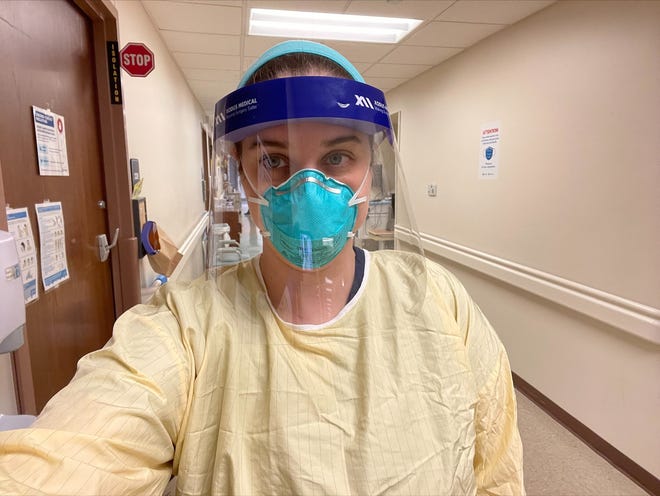
The doorways are all shut on 3C. Every single individual in the pulmonary device at St. Elizabeth-Edgewood Medical center has COVID-19.
Every single day and typically into the night, Melissa Schumacher, the unit’s nurse supervisor, is texting, emailing, contacting nurses, even nurses whose usual career is training or top quality control or informatics, asking them to acquire shifts so that, possibly, 3C can have a comprehensive nurse staff.
“Each day is tense. We never know how significantly employees we’re going to have. Since we have a ton of personnel get unwell and have to be out,” she said. “And a never-ending checklist of clients that have to have to come in.”
Assistance for healthcare employees:Nationwide Guard arrives at Christ Medical center
COVID at house: What do I will need, doc? Guidelines on self-care
Omicron and masks: N95, KN 95 or surgical? Local doctors give information
What Schumacher is struggling with now is the routine at hospitals through the Cincinnati region and the United States. The impression of the delta variant of COVID-19 followed by the omicron variant – a sort some experts predict is as “transmissible the virus can get” – is stressing health and fitness methods to the max. And front-line overall health treatment staff are carrying the load.
As of Thursday, 1,032 individuals had been hospitalized with COVID-19 in the region’s 40 hospitals 212 were being becoming handled in the intense treatment units and 140 have been on ventilators. Place yet another way, 4 of each 10 individuals in the region’s 40 hospitals had COVID-19.
Individuals wait for up to 15 hours
Michele Hodge, an unexpected emergency division nurse who serves as the medical supervisor at the College of Cincinnati Medical Centre in Corryville, stated caregivers are undertaking all they can, performing outside their typical schedules, some seven times a week, other individuals 16 several hours a day. Meanwhile, patients looking for care relying on the severity of their disease, might have to hold out in a lobby for upwards of 15 hours to be seen mainly because of ability troubles.
“I’ve been in wellbeing care for about 13 yrs and I have never ever observed anything like this,” Hodge reported. “You go into this area since you want to assist and mend folks, and it can be tough when you happen to be not able to treatment for all sufferers in a timely method thanks to overcrowding and wait around instances.”
“At instances you experience helpless,” she reported.
At war with COVID: What professional medical workers can learn from veterans about PTSD
Clinic employees are fatigued. Abnormal schedules and workdays are normal now. The 2020 to 2021 pandemic rush was difficult, followed by a lull. Then, Schumacher mentioned, it strike once more. “When delta and omicron begun coming,” she claimed, “it was incredibly a great deal a PTSD-like situation. I experience like my group bonded in that.”
But as nurses have linked by way of the most tough interval of their occupations, the reemergence of

